Travel

Pistoia, the capital of green
From the moment you arrive in Pistoia , it seems as if you are in a city wrapped in a green blanket. This image is not just a modern suggestion, but is rooted in a centuries-old tradition that has made Pistoia famous for its cultivation and nursery g...Read more...

How wealth has shaped Florence and its territory over the centuries
"The quantity and determination of subjects active in the field of patronage both ecclesiastical and secular," wrote art historian Cristina Acidini, characterized Florence "at the time of the free Communes and beyond over the centuries: the civil gov...Read more...

Discovering Gubbio: 10 places to get to know the city
Gubbio, among the rolling hills of Umbria, is one of the best-preserved medieval towns in Italy. Walking through its ancient streets, one feels transported back in time, immersed in an atmosphere charged with history. This charming town is known not ...Read more...

Valnerina, what to see: 10 places not to miss
The Valnerina, nestled among the soft hills and mountains ofUmbria, is a land that holds unspoiled nature, enchanted villages and ancient traditions. Crossed by the Nera River, this valley offers a spectacle of scenic and cultural beauty, making it o...Read more...

Monte Vibiano Vecchio, a labyrinth and a castle in the heart of Umbria
Among the rolling hills of Umbria, the village of Monte Vibiano Vecchio, in the municipality of Marsciano, is home to a castle, the Castello di Monte Vibiano Vecchio, which is distinguished by a unique element: a hedge maze designed in the early deca...Read more...

The Republic of Cospaia: history of a state born by mistake in Valtiberina
Visiting the Museum of Palazzo Taglieschi in Anghiari, where a marvelous polychrome wood sculpture by Jacopo della Quercia is preserved, you will happen to come across a very curious slab made of pietra serena, a typical material of this area of Tusc...Read more...

Pisa, what to see: 15 places not to miss
Pisa is a city that lives suspended between the past and the present: world-famous for its Leaning Tower, Pisa offers much more to its visitors than one can imagine. Situated along the banks of theArno River, Pisa was one of the four Maritime Republ...Read more...

The Labyrinth of Villa Garzoni in Collodi, a maze for lovers
An ancient labyrinth, though it has survived in different forms than it did centuries ago, inside one of Tuscany's most beautiful villas . This is the labyrinth of Villa Garzoni, one of Italy's most fascinating historic residences, famous not only fo...Read more...

The museum of ordinary lives: the Little Diary Museum in Pieve Santo Stefano
Imagine a room full of bookshelves, where each book does not tell the story of a famous person, but that of an individual like us, with his joys, fears and hopes. A sea of human experiences, from the letters of a soldier at the front during World War...Read more...

Orvieto, what to see: 10 places to discover it
Orvieto is a city situated atop a tuff cliff in the heart ofUmbria. Famous for its thousand-year history and artistic and cultural heritage, Orvieto is enveloped in a special medieval and Renaissance atmosphere. The cathedral, a Roman-Gothic masterpi...Read more...

The Luminara of San Ranieri in Pisa: origins and history of the festival of lights
Every year, on June 16, the palaces that line Pisa 's lungarni are lit up with tens of thousands of lights: this is the Luminara di San Ranieri, one of the most fascinating and long-lived events held in the city of the Leaning Tower, an annual event ...Read more...

Fabriano, what to see: 10 places to discover in the city of paper
Located in the Marche region of Italy, Fabriano is a city with a history rooted in Neolithic times as evidenced by archaeological finds at the Attidium site. Fabriano's best-known feature is its ancient tradition in papermaking, which has earned it t...Read more...

A labyrinth that is not a labyrinth: the garden of Villa Barberini at Castel Gandolfo
A labyrinth adorns the garden of one of the most beautiful palaces in the Castelli Romani: this is the labyrinth of Villa Barberini, located in Castel Gandolfo, among the Alban Hills. Villa Barberini is among the most interesting pontifical villas in...Read more...

Foligno, what to see: 10 places not to miss
Foligno is a city located in the region ofUmbria. Its history dates back to pre-Roman Umbrian times, when the ancient Umbrians probably founded it around the 10th century BC, under the name Fulginia. Later, the city began its urban evolution, and in ...Read more...

Tuscan Valtiberina, what to see: 10 places not to be missed
Along the Tiber River, guarded by the peaks of theTuscan Apennines, lies the Valtiberina, a splendid area straddling Tuscany and Umbria, characterized by its natural beauty, its rolling hills that then give way to mountains, dense forests and verdant...Read more...

The labyrinth of Bufalini Castle in Umbria, one of the oldest in the world
In the heart of theUpper Tiber Valley, the Umbrian Valtiberina, stands one of the most interesting 15th-century architectural complexes in Italy: the Bufalini Castle in San Giustino, a town of ten thousand inhabitants between Sansepolcro and Citt&agr...Read more...

Touring the Rognosi Mountains, in a little-known and unspoiled corner of Tuscany
A lush reserve in the far east of Tuscany, on the border withUmbria, among undulating hills and verdant valleys: it is here, in the municipal territory of Anghiari, between the Alpe di Catenaia and the Apennines, along the banks of the Sovara stream,...Read more...
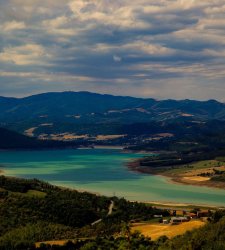
On the Tiber floodplain in Valtiberina, in the landscapes beloved by Pliny the Younger
The Valtiberina, renowned for its rich cultural and artistic history, also offers extraordinary natural beauty. Among the gems of this little-known area of Tuscany is theGolena del Tevere Protected Natural Area, a place where unspoiled nature unfolds...Read more...
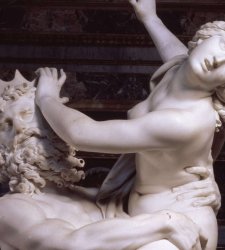
Rome, the route to discover ten of Gian Lorenzo Bernini's most famous works
Gian Lorenzo Bernini (Naples 1598 - Rome 1680) is the leading figure of seventeenth-century European Baroque figurative culture. In his artistic career he distinguished himself among Roman artists, earning a prestigious reputation with the popes and ...Read more...
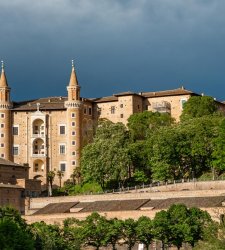
Urbino, what to see: the 10 places to visit in the city of the Renaissance
Urbino, a city located in the hills of the Marche region, has gained international fame for its extraordinary artistic and cultural heritage. However, its notoriety is not only due to its artistic riches, but also to its history and the key role it p...Read more...
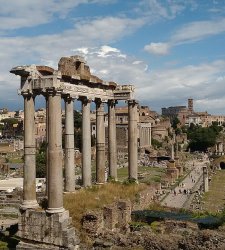
Rome, definitive guide to the monuments of the Roman Forum and the Imperial Fora
In Rome, a walk along Via dei Fori Imperiali is definitely one of the best activities to do, both for those coming to the city for the first time and for locals. Walking in the heart of Rome, between the imposing structures of the Colosseum and the ...Read more...
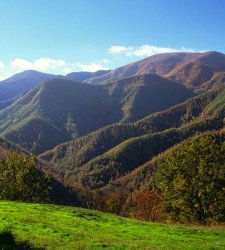
Amidst ancient legends and medieval vestiges, a tour on the Alpe della Luna
An ancient legend of the Valtiberina tells that in the Middle Ages a knight, Manfredi di Montedoglio, lived in these parts and was in love with a young country noblewoman, Rosalia, daughter of the squire of Colcellalto. Because of the difference in c...Read more...
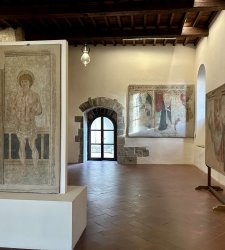
What to see in Sansepolcro: a historical-artistic itinerary through the streets of the center
Writing about that splendid strip of land between the banks of the Upper Tiber, known as the Valtiberina, Antonio Paolucci argued, "In this part of Italy, Beauty is ubiquitous and pervasive. Ubiquitous because you encounter it everywhere, pervasive b...Read more...
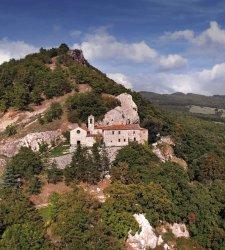
The places of St. Francis in Valtiberina: an itinerary among devotion, art and nature
The importance of walking has archetypal values, taking on practical, liturgical and spiritual functions in numerous religions, and Catholicism is no exception. It is certainly not uncommon for people, most of whom became saints, to have based their ...Read more...

Modigliani's places in Livorno: 10 sites to learn about the artist
The city of Livorno has always had a deep connection with the arts and culture, and one of the artists whose name is most closely linked to that of Livorno was Amedeo Modigliani. Born July 12, 1884 in the Tuscan city, Modigliani left an indelible imp...Read more...
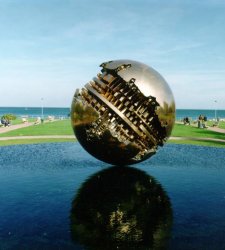
Pesaro, what to see: 10 must-see places in the city
Located on theAdriatic coast, not far from Romagna, the city of Pesaro is the second most populous city in the Marche region after the capital Ancona. An important Renaissance center, Pesaro has a long history dating back to Roman times and has playe...Read more...
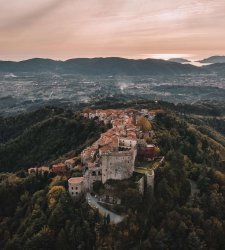
Massa-Carrara, what to see: the 10 places not to miss
Mountains overlooking the sea, unique landscapes of rare beauty, towns steeped in history, medieval villages, ancient castles, Romanesque parish churches, Renaissance and Baroque palaces, and roots that are lost in prehistory. We are talking about th...Read more...

The Busatti weaving mill in Anghiari, between art and craftsmanship for nearly 200 years
"The secret behind successful succession," is how, in 2020, the Financial Times titled its report on the historic Busatti weaving mill in Anghiari, a factory founded in 1842 in the Valtiberina village, still thriving after nearly two hundred years of...Read more...
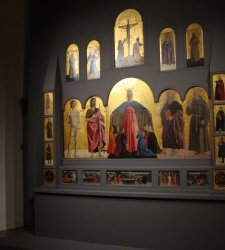
Museums in Valtiberina, which ones to see: the 10 not to be missed
The Valtiberina, an enchanting region between Tuscany and Umbria, nestled along the banks of the Tiber River, reveals itself as a jewel of history and culture, with its museums serving as custodians of the memories that weave the past and present of ...Read more...
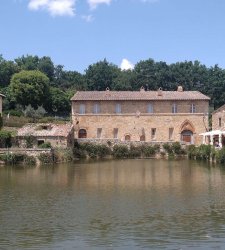
Bagno Vignoni, the village with a bath instead of a square
Thermal waters in a landscape of extraordinary beauty, in a region famous for good living. We are talking about the Val d'Orcia, a UNESCO World Heritage Site since 2004, and the thermal waters of Bagno Vignoni. Bagno Vignoni, to be exact, is a hamlet...Read more...
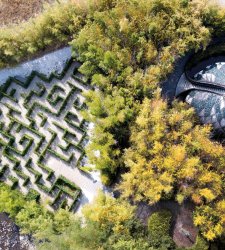
Pinocchio's Labyrinth: a symbol of the vicissitudes of the world's most famous puppet
In theItaly of the 1950s, the idea of dedicating an entire park to one of the most beloved literary figures for children and adults alike, Carlo Collodi's Pinocchio , was highly original in itself, but opening a park dedicated to Pinocchio and fillin...Read more...
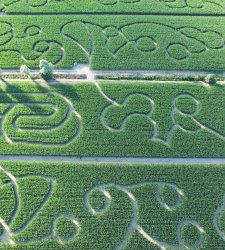
A corn maze that changes every year: the Hort Labyrinth in the Marche region of Italy
A corn maze that changes every year. It is located in the Marche region, in Senigallia (although on a few occasions it has changed locations: Porto Recanati, Ancona, Ostra), and has now become, every year, a fixture for enthusiasts, tourists, and the...Read more...
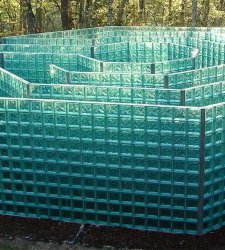
Jeff Saward's glass labyrinth at Chianti Sculpture Park
Usually those who think of Tuscany think of the Renaissance, or the splendid medieval gold backgrounds that decorate the region's most beautiful churches; someone else perhaps will be willing to go as far back as the19th century Macchiaioli, especia...Read more...
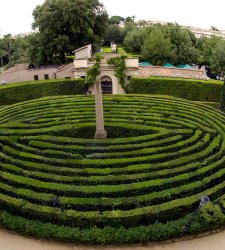
A maze in the heart of the Republic. The labyrinth of the Quirinal
There is a labyrinth in the heart of Rome, indeed: in the heart of Italy, in the highest institutional seat of state. In fact, not everyone is aware of the presence of a labyrinth in the garden of the Quirinal Palace, right inside the seat of the Pre...Read more...
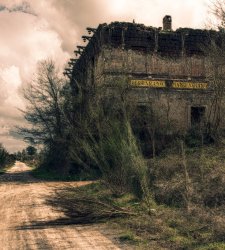
Along the former Capranica-Civitavecchia railway, among archaeological sites and abandoned stations
It was June 4, 1944 when, four months after the Anzio landings, the Allies began arriving in Rome to free the capital from the Nazi grip. During the dark years of World War II, the Capranica-Civitavecchia-Orte railroad continued its operations undaun...Read more...
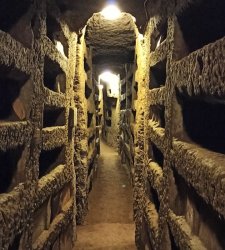
Catacombs of Rome, which ones to see: guide to the 10 most interesting ones
The catacombs of Rome constitute a vast system of underground cemeteries located along tunnels that extend beneath the city. These catacombs were primarily used as burial sites during the first centuries of Christianity. The Roman catacombs originate...Read more...
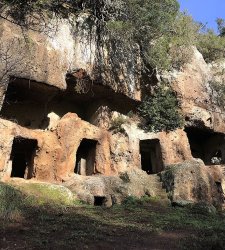
Among forests and Etruscan necropolises: the Marturanum Regional Park
Walking through the woods, especially as autumn gets closer, is a bit like coming home after a very long journey. The world here is softer underfoot, and as you walk you discover the warm hues of nature that welcome any traveler. Among the most strik...Read more...
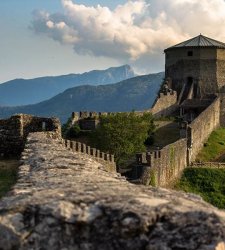
Garfagnana, what to see: the 10 places not to be missed
Garfagnana, a beautiful mountainous region in the northern part of Tuscany, corresponding to theupper Serchio valley, is located a short distance from Lucca, the provincial capital, and is characterized by beautiful natural landscapes, lush chestnut ...Read more...
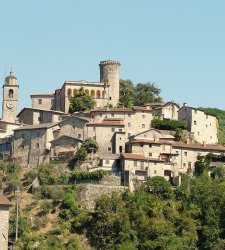
Lunigiana, villages to see: the 10 not to be missed
In the northernmost part of Tuscany, here is Lunigiana: a jewel surrounded by the majestic Apuan Alps and the northern Apennines, a fascinating land that is a cross between an often still wild nature and a multi-millennial history, able to offer visi...Read more...
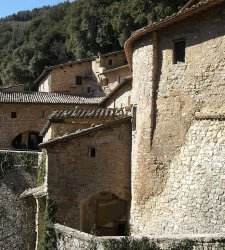
Discover the history of St. Francis in 10 places between Umbria and Tuscany
St. Francis, of aristocratic extraction, was born in Assisi between December 1181 and September 1182 and, according to one legend, was conceived during a journey to the Holy Land by a couple now advanced in years. Immediately after his miraculous bir...Read more...
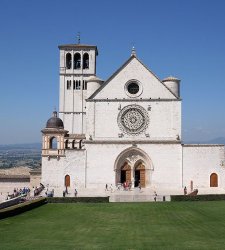
Assisi, what to see: 10 places not to miss
Along the cobbled, narrow streets of Assisi one discovers stories of saints and pilgrims who have lived, loved and suffered here. As you walk along them the soul surrenders, but the Umbrian city, home of St . Francis and St. Clare, is not only a stor...Read more...
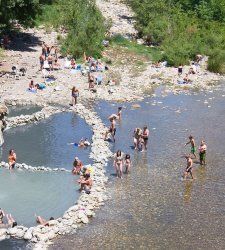
Free spas in Tuscany: 8 sites where you can bathe for free
When people say "thermal baths" they usually think of luxurious establishments with pools, indoors or outdoors, that channel water from a nearby spring and where you enter strictly for a fee. However, not everyone knows that there are, all over Italy...Read more...
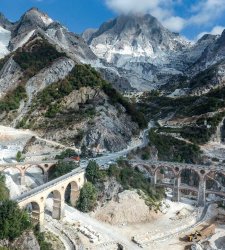
Carrara, what to see: the 10 places not to miss
Carrara, the world capital of marble, a city with a history spanning thousands of years, nestled among quarries in the Apuan Alps, a city that stretches from the mountains to the sea, dominated by the imposing bulk of Mount Sagro, the sacred mountain...Read more...
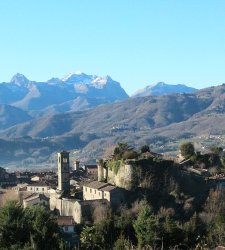
Garfagnana and Middle Valley villages, which ones to see: top 10
Garfagnana, or theupper Serchio Valley, corresponds to the northernmost area of the province of Lucca, squeezed between the Apuan Alps on one side and theTuscan-Emilian Apennines on the other. Among its mountains, rich in chestnut forests, and reachi...Read more...
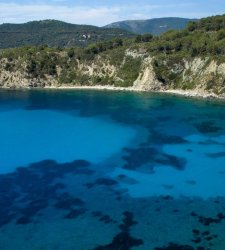
Elba Island, what to see: the 10 places not to miss
Elba Island is the largest island in theTuscan Archipelago as well as the third largest in Italy. It is located about ten kilometers from the coast, and the easiest and quickest way to get there is by ferries that leave from Piombino and in about for...Read more...
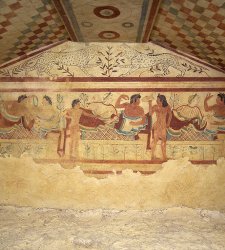
Tarquinia, what to see: the 10 must-see places in town
Tarquinia is undoubtedly one of the most beautiful cities in central Italy, but not only that: it is also one of the most historically rich cities in our country. It is the ancient Tarchuna of the Etruscans, one of the most important cities of the Do...Read more...
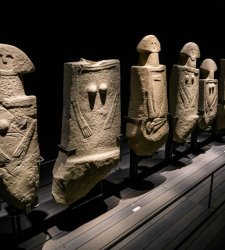
Lunigiana, what to see: the 10 places not to be missed
Lunigiana, a mysterious land of castles, ancient parish churches, inhabited in ancient times by the indomitable population of the Apuan Ligurians, who in these parts have left their most obvious artistic and cultural testimony, the stele statues of L...Read more...
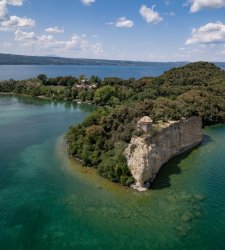
Bisentina Island, what to see on the largest island of Lake Bolsena
Bisentina Island, at 0.17 square kilometers in area, is the larger of the two islands on Lake Bolsena. Administratively part of the municipal territory of Capodimonte, one of the villages overlooking the lake, until recently it was inaccessible: sinc...Read more...
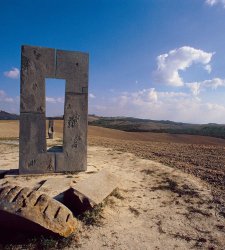
Crete Senesi, what to see: itinerary in 10 steps
Not far from Siena, a short distance from the outskirts of the city, heading southeast, one comes across a characteristic, almost lunar landscape: these are the Crete Senesi, the vast area characterized by large areas of barren, clayey soil (hence th...Read more...
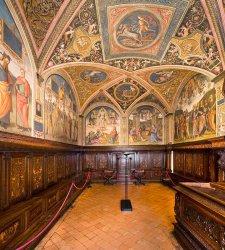
Perugino in Umbria, what to see: 10 places that preserve his works
There are many towns inUmbria marked by the presence of Perugino (Pietro Vannucci; Città della Pieve, 1445 - Fontignano, 1523). No region more than Umbria bears the traces of the great artist: known as a pupil of Verrocchio and especially as a...Read more...
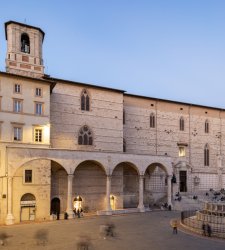
Discovering Perugino's places: thematic itineraries
On the occasion of the 500th anniversary of the death of Pietro Vannucci known as Perugino (City of Pieve, c. 1450 - Fontignano, 1523), theArchdiocese of Perugia-City of Pieve has organized, as part of the Perugino in the Sign of Time project, a seri...Read more...
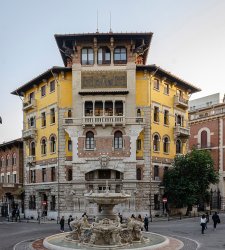
Rome, 10 unusual places far from mass tourism
Rome certainly needs no introduction; the Eternal City has spanned history and is universally known. The capital of Christendom, with its wealth of history and artistic heritage, it is one of the few places in the world where a lifetime would not be ...Read more...
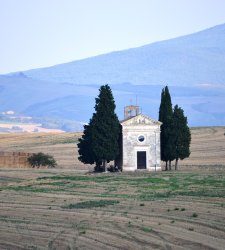
Val d'Orcia, what to see. Itinerary in 10 stages
When speaking in images of Tuscany there is one, excluding that of monuments, that in iconography represents it par excellence: it is the Val d'Orcia. Or rather, perhaps many people don't know it but those cypress trees on top of a hill in a context ...Read more...
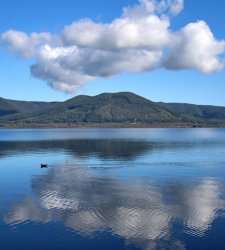
Lake Vico, what to see: 10 must-see stops
Near Viterbo, an hour from Rome, until 90,000 years ago there was an active volcano that concluded its activities and collapsed in on itself, forming a crater that later became a lake, surrounded by centuries-old forests, creating a protected environ...Read more...
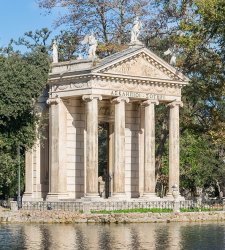
Villa Borghese, what to see: 10 stops in the green heart of Rome
To one of the most important of the families in Rome's history, the Borghese family, originally from Siena, who counted cardinals, princes and popes, we owe the presence of Villa Borghese, one of the most evocative spaces in today's super-urbanized I...Read more...
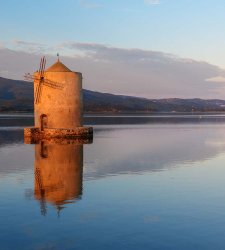
Monte Argentario, what to see. Itinerary in 10 stages
In Tuscany, almost on the border with Lazio, there is a promontory famous throughout the mare nostrum: Mount Argentario. A crystal-clear sea, between theislands of Giglio and Giannutri, in the middle of the "Cetacean Sanctuary" with a marine area cla...Read more...
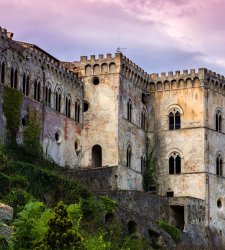
Buti, the Tuscan oil village celebrated by D'Annunzio
Are you familiar with Buti? It is a village in the province of Pisa, which can boast the first Palio of Tuscany in chronological order, castles and fortifications, a Medici villa, a mountain from whose slopes you can climb for a hiking trip in the mi...Read more...
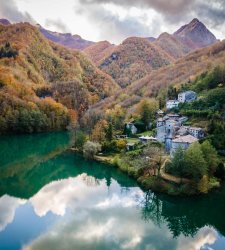
Holy Island, what to see in the beautiful village between the Apuan Alps and Garfagnana
Isola Santa, an enchanted village endowed with a charm so evocative that it seems to have come out of the brush of an impressionist painter or the imagination of a novelist, instead of being the result of the toil of a proud population always living ...Read more...
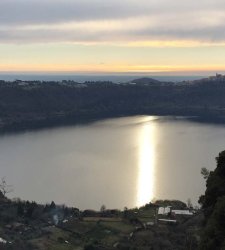
Lake Nemi, what to see: 5-step itinerary
Lake Nemi has been a splendid resort since the time ofancient Rome. Easily accessible from the capital, Lake Nemi is a volcanic lake with characteristics similar to those of Lake Albano compared to which it is considerably smaller. Geologically speak...Read more...
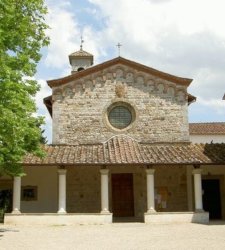
Mugello's museums, between tradition, arts and landscape
The Mugello museum system, where Mugello means the Tuscan territory a few kilometers from Florence that stretches in the middle-upper part of the Sieve river basin and is characterized by awide variety oflandscapes, from dense forests to flat areas, ...Read more...
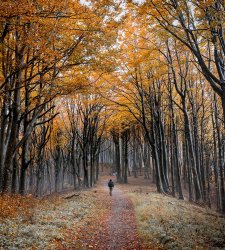
Casentino forests, what to see: 10 places not to be missed
The Casentino Forest s are a unique place straddling Tuscany and Romagna where unparalleled nature frames medieval villages, ancient castles, parish churches and shrines with ancient charm. Always a land of passage for pilgrims and merchants, the Cas...Read more...
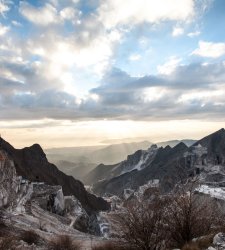
Apuan Alps, what to see: 10 places not to miss
The Apuan Alps are the best possible answer to the question, "Sea or mountains?": this mountain range is in fact a naturalistic paradise overlooking the Ligurian Sea, a unique environment that makes it possible to go in just a few tens of minutes fro...Read more...

Animals and fantastic places in Italy's museums: Marche
We have reached stop number twelve in our journey through Italian museums in search of animals, creatures and fantastic places. This time the itinerary stops in Le Marche in search of presences in the region's museums. Here's what we found! The proje...Read more...
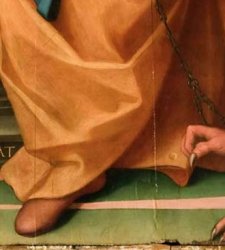
Animals and fantastic places in Italy's museums: Umbria
Ninth stage of our journey to discover animals and fantastic places in Italian museums: let's find out today what is hidden in Umbria. The project is led by Finestre Sull'Arte in collaboration with the Ministry of Culture to bring the public to know ...Read more...
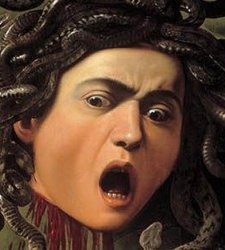
Animals and fantastic places in Italy's museums: Tuscany
The journey of discovery of animals, creatures and fantastic places in the Italian peninsula continues with Tuscany, thus reaching its sixth stage. The Finestre Sull'Arte project is in collaboration with the Ministry of Culture and aims to bring visi...Read more...
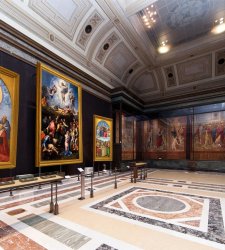
Vatican Museums, what to see: the museums of the popes in 10 steps
The Vatican Museums are not only one of the best known and most visited museum complexes in the world, but they are a treasure chest where some of the greatest masterpieces in the history of art are carefully kept. The list of must-see works that can...Read more...
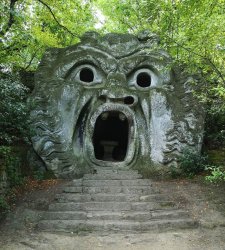
Tuscia, what to see: journey in 10 must-see stops
Tuscia is an area with a very ancient history in the heart ofcentral Italy. Tuscia now encompasses roughly the entire province of Viterbo andupper Lazio and preserves within it true natural and artistic treasures. To discover Tuscia is to discover th...Read more...
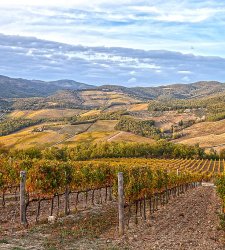
Chianti, what to see: 10 places not to miss
You say Chianti and you think of wine, of course, but you also think of rolling Tuscan hills, cypress trees and alternating shades of yellow and green, you think of towns and villages with centuries of tradition and rich in artistic treasures, you th...Read more...
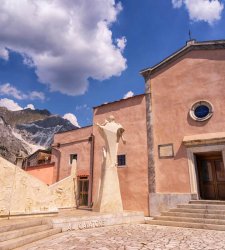
Colonnata, what to see in the village of lard and marble
Colonnata is a splendid village set among marble quarries, in the Apuan Alps: it is located a short distance from Carrara, from whose center it is little more than seven kilometers away, which can be traveled by a convenient road that enters the marb...Read more...
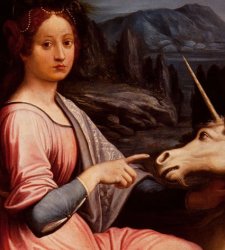
Animals and fantastic places in Italy's museums: Lazio
After Lombardy and Campania, Finestre sull'Arte 's journey to discover the animals and fantastic creatures depicted in the works of Italian museums and the fantastic places one encounters as one travels along our peninsula makes a stop in Lazio. Betw...Read more...
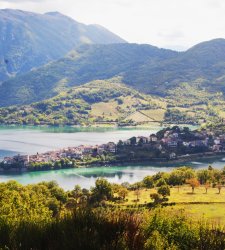
Lake Turano, what to see: five-step itinerary
Lake Turano is undoubtedly one of the most scenic places in Lazio among striking views, great biodiversity and enchanted villages where time seems to stand still. Lake Turano is a reservoir in eastern Sabina, in the province of Rieti, and lies on th...Read more...
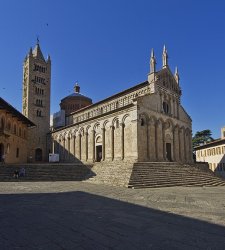
Maremma, what to see: 10 villages not to be missed
Maremma: a land waiting to be discovered. Straddling Tuscany and Latium, the Maremma is a land that is impossible not to fall in love with, among Italian-style wild west views, fashionable villages and beaches and many, many treasures guarded among t...Read more...
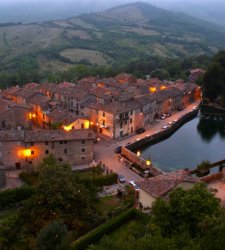
Mount Amiata, what to see: itinerary in 10 steps
Mount Amiata: an extinct volcano in the heart of Tuscany now an authentic paradise for lovers of the outdoors. Amiata, with its nearly 1,800 meters (6,500 feet) of height, stands imposingly tall over this corner of Tuscany and from its summit offers ...Read more...
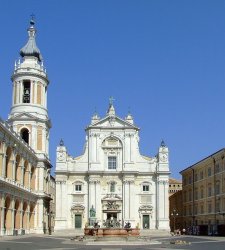
Conero, what to see: itinerary in 10 steps
The Conero is an unmissable corner of Le Marche and all ofcentral Italy where the force of the elements and the creativity of man have shaped a unique environment. Crystal-clear waters, beaches surrounded by the sinuous profiles of the promontory, an...Read more...
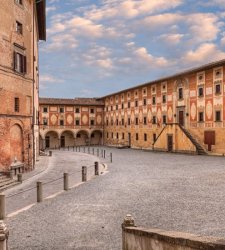
San Miniato, what to see: 8 places not to be missed
San Miniato: art, crafts, good food and a rich history in the heart of Tuscany. Placidly nestled in the hills halfway between Pisa and Florence, San Miniato is one of the pearls of the region within which it has always played a far more important rol...Read more...
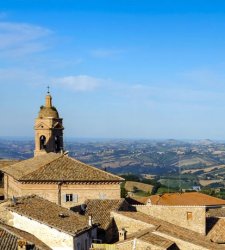
Sibillini Mountains, what to see: 10 stops among villages, nature and art
The Sibillini Mountains are a magical place in the heart of Italy. Beautiful landscapes, ancient villages and centuries-old traditions make the Sibillini Mountains with their National Park the perfect place for a "slow pace" vacation away from the hu...Read more...
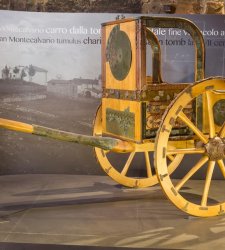
Getting to know the Etruscan princes. An itinerary from Chianti to Valdichiana
The present province of Siena was in ancient times a central area for Etruscan civilization. Chiusi, one of the cities of the Etruscan dodecapolis, that is, the set of twelve city-states that gave rise to the Etruscan League, is located here, and in ...Read more...
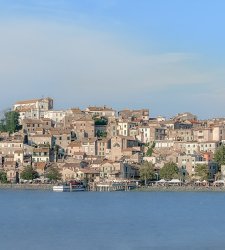
Lake Bracciano, what to see: 10 must-see stops
Lake Bracciano is an important naturalistic oasis just a stone's throw from Rome, but not only. Lake Bracciano is an ideal place for a vacation that combines the outdoors with discovering the traditions of ancient civilizations and the secrets of pla...Read more...
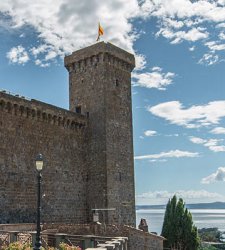
Lake Bolsena, what to see: 10 places not to miss
Black sand, blue waters, green forests. Lake Bolsena never ceases to amaze. The shores of what is Europe's largest volcanic lake are a continuous succession of peninsulas and headlands, sandy beaches, cultivated fields and lush forests. Bursting natu...Read more...
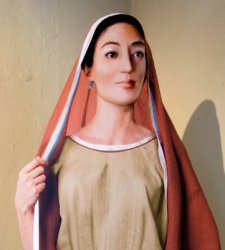
Perfumes, mirrors and jewelry: the beauty of the Etruscan woman in Siena's museums
From the finds that have come down to us, we understand how Etruscan women must have cared a great deal about body care and beauty. The archaeological evidence found in the lands of Siena and displayed in the museums that are part of the Sienese Muse...Read more...
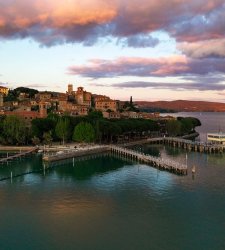
Lake Trasimeno, what to see: 10 places of art
Set among the rolling hills ofUmbria, Lake Trasimeno is a natural wonder in the heart of central Italy. Always a crossroads for pilgrims and travelers, Lake Trasimeno is one of the most sought-after destinations for those in this part of Italy to vis...Read more...
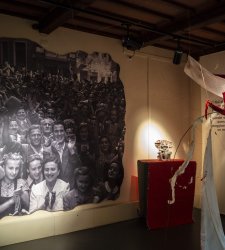
Siena, an itinerary through the places of memory
It was July 3, 1944, when French troops entered Siena through Porta San Marco, a few hours after the Nazi-Fascists had left it: the city was in fact liberated "softly," without the din of cannonades and machine guns, since the Liberation Committee ha...Read more...
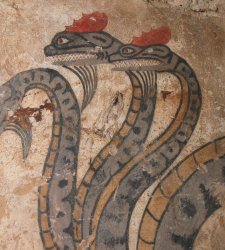
Real and fantastic animals in the lands of Siena: itinerary to discover the Sienese bestiary
Bears, lions, fish, amphibians, birds, fantastic creatures: there are many and of various species of animals that can be found depicted in sculptures, paintings or objects in the lands of Siena, or of which traces remain that go back even to prehisto...Read more...
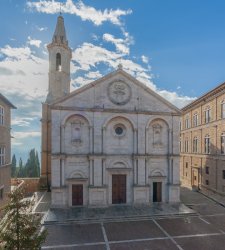
An itinerary in Val d'Orcia in the footsteps of Pope Pius II, great humanist of the 15th century
Pius II, born Aeneas Silvius Piccolomini, can be considered a sui generis pope because he did not embark on an ecclesiastical career at a young age, as was usual for the time: in fact, he had his vocation as an adult, already in his 40s, and ascended...Read more...
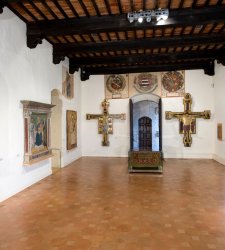
The fifteenth century in San Gimignano: works and artists between Florence and Siena
Year 1353: the city of San Gimignano, until then a free commune, signed the act of submission to Florence, and the event sanctioned the end of thepolitical independence of this important center near Siena, now universally known for its towers, the mo...Read more...

Assisi, an itinerary in 15 works to learn about St. Francis through art
"Simplicity, poverty and the love of God and men are for St. Francis of Assisi dwelling, protective and saving envelope, the result of a path of true faith aimed at imitating Christ in every aspect, even in pain": this is how the organizers of the ...Read more...
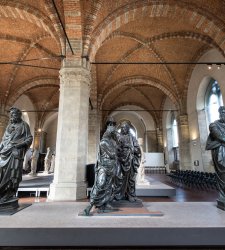
10 quiet places to see in Florence off the beaten path of mass tourism
Have you arrived in Florence without a reservation and couldn't find a ticket to go to the Uffizi? Did you want to go see Paolo Uccello's Giovanni Acuto in the Duomo but there is a long line to get in? Does the throng of tourists at the Accademia Gal...Read more...
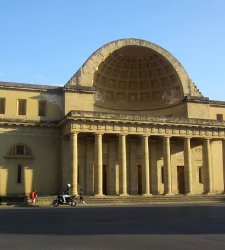
Art in Livorno: 10 places to visit in the city
It is probably the least considered capital city in Tuscany, because many believe, wrongly, that Livorno has a more recent history than other better-known and, according to common perception, more pleasant (not only Florence, Siena and its neighbor a...Read more...
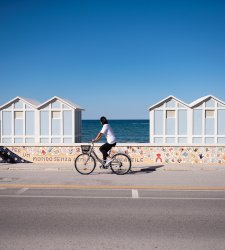
A kilometer of mosaics: the artistic promenade of Marotta in the Marche region
A kilometer of waterfront entirely covered in mosaics: more than two hundred in all. This is the project of the town of Marotta, in the Marche region, which in 2015 launched the initiative to deliver to citizens and tourists a colorful promenade crea...Read more...
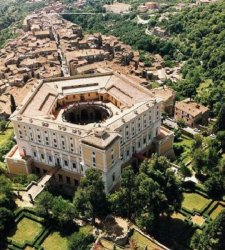
Places of Mannerism in Tuscia and the Viterbo area: five sites to see in two days
A fief of the Farnese family, a land closely linked to the papal court and its exponents, an area where the great artists of Mannerism worked for several powerful lords of the sixteenth century: this is Tuscia, the area of northern Latium around Vite...Read more...
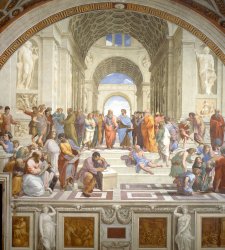
Raphael's works in Rome: five places to see in two days
The great Raphael Sanzio (Urbino, 1483 - Rome, 1520) spent a large part of his career in Rome: in fact, the painter left Florence at the end of 1508 after spending four years there and moved permanently to Rome, where he was to remain for the...Read more...
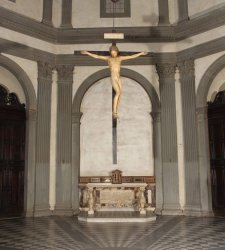
Five places in Tuscany to see lesser-known works by Michelangelo in two days
Our new travel format Five Places in Two Days continues: after going to Mantua on the trail of Giulio Romano and to Parma and its environs to discover the works of Parmigianino, today's trip is to Tuscany to discover five places to see some lesse...Read more...
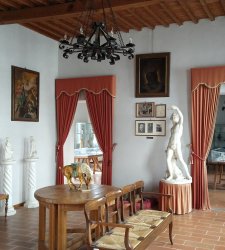
Coreglia, the ancient village of emigrants who brought plaster figurines to the world
A scholar from Lucca, Guglielmo Lera, a profound connoisseur of the history of his land, noted in one of his articles, with a certain dose of irony, that in Coreglia Antelminelli, a village of medieval origins located on a hill in the center of t...Read more...
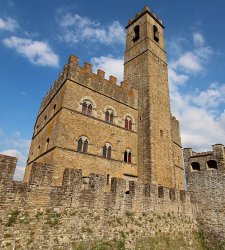
Poppi, between hermitages and castles in the silent forests of Casentino
Pupium Clausentinii agri caput, or "Poppi, capital of Casentino." Next to a year, 1440, the date from which the village of Poppi became part of Florentine rule. So reads the inscription that Giorgio Vasari, in the ceiling of the Salone dei Cinque...Read more...
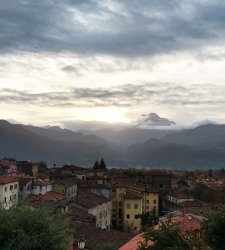
Barga, the town of two sunsets: a little mountain Florence
Barga is said to be the only town in the world where it is possible to see two sunsets. It happens only twice a year: between January 29 and 31 and between November 10 and 12. It is on these dates that the right conditions occur: the sun first di...Read more...
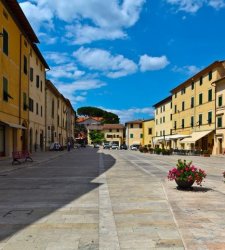
As in a fifteenth-century painting: Cetona, the village beloved by Berenson
Bernard Berenson, the great art historian, said there are only two places in Italy that have preserved the spirit of the 15th century intact. One is Asolo, in the Veneto region. The other is Cetona, in Tuscany. However, things have changed a lot in A...Read more...
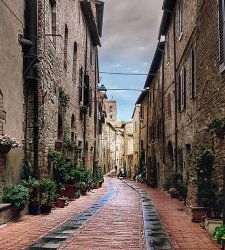
Casole d'Elsa, ten centuries of art in the hills of Siena
A cluster of stone and brick houses clinging to the ridge of a hill in the Sienese Montagnola, amid dense woods of holm oaks, looking on one side at the forest of Berignone and further away at Volterra, on another side still at the Valdelsa and, ...Read more...
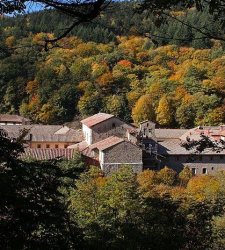
A trek through art, nature and foliage in the Casentino Forests towards Camaldoli
We are in Tuscany, in Casentino, for a hiking trail dedicated to lovers of nature, art and trekking. A route suitable for everyone, to be taken in this autumn season, when the foliage becomes the protagonist. Starting from the Monastery of Cama...Read more...
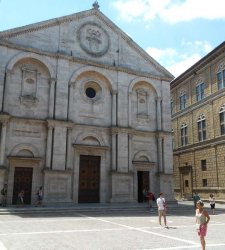
Pienza, the ideal city of the 15th century born at the behest of a pope
For so many who have spoken of her, Pienza is the "ideal city" of the 15th century, the only example of a 15th-century city born (or, rather, restructured) according to a pre-established urban plan, in what Franco Cardini and Sergio Raveggi have ca...Read more...
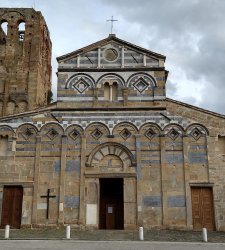
Calci, from the splendors and rigors of the Charterhouse to the marbles of the Romanesque parish church
In Calci, the elders of the village still remember the Carthusian monks' spatiamentum , the "spacing out," or weekly walk, the only time they could get out of the Charterhouse, even though they could not speak to outsiders. They are the most inac...Read more...
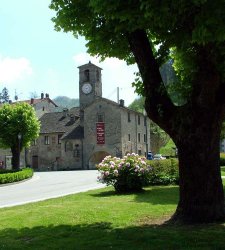
Palazzuolo sul Senio, a remote piece of Romagna in the mountains of Tuscany
It is called Palazzuolo sul Senio, but to its inhabitants, who speak Romagnolo, it is "Palazôl." It is a Mugello village of just over a thousand inhabitants, nestled between two ridges of the Tuscan-Romagna Apennines along the Senio valley,...Read more...
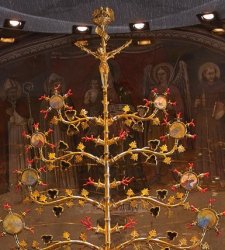
Lucignano, a medieval castle in the Chiana Valley countryside
Tree of Life, Golden Tree, Tree of Love, Lucignano Tree. These are some of the names tradition has ascribed to one of the most famous reliquaries in the history of art, an extraordinary work of goldsmithing two and a half meters high, a splendid go...Read more...
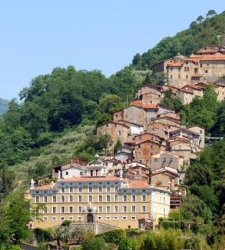
Collodi, the ancient and steep village of Pinocchio
"Just past Altopascio, if you turn to the left, you see in the distance a long crawl of old casipole blackened by time, climbing up the back of a high and steep mountain, like a herd of bigie sheep. That crawl of casipole is the ancient castle of C...Read more...
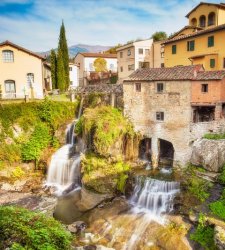
Loro Ciuffenna: in Valdarno among hills dotted with Romanesque churches
"Loro" is the real name of the village, the one attested since the Middle Ages: it comes from "laurus," laurel in Latin. "Ciuffenna," on the other hand, is the name of the stream that washes it. "Loro Ciuffenna " officially became the name of the v...Read more...
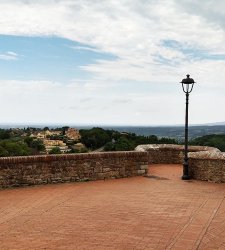
The village of Montescudaio, an ancient terrace overlooking the Cecina Valley and the sea
The alleys of Montescudaio are deserted at lunchtime. The only noise that can be heard is the rustling of the wind that rises from the sea and creeps through the narrow stone houses in the upper part of the village and then descends to sweep the tw...Read more...
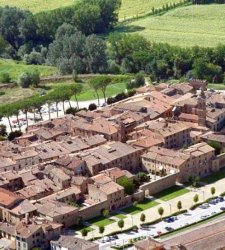
Buonconvento, the "happy place" in the center of the Arbia valley, in the Crete Senesi
Giovanni Boccaccio tells of a certain Cecco di Fortarrigo, an avid gambler and legendary drinker, who, accompanying his dominus, Cecco Angiolieri, gambled away his own and his master's money (savings that were needed for a six-month stay in the March...Read more...
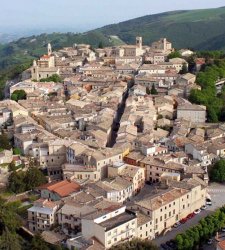
Cingoli, in the Marche hills where Lorenzo Lotto and a pope meet.
Cingoli, in the hills of the Marche region where Lorenzo Lotto and a pope meet.In the municipal reform books of Cingoli, a "supplicatione" from the prior of the church of San Domenico to the municipality of Cingoli is recorded on the date of February...Read more...
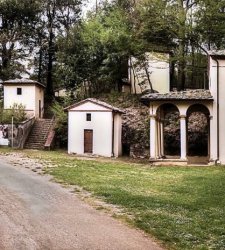
Montaione, a mystical village in the woods of the Florentine Valdelsa
Year 1500: Franciscan friars arrive in Montaione, a glassmaking village tucked away in the thickets of a green and wooded area of the Florentine Valdelsa. Among them is a Florentine monk, Friar Thomas of Florence, who before arriving in these hills...Read more...
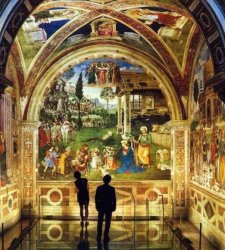
Melancholy serenity: Spello, the Roman, medieval and Renaissance village
Meadows, trees, skies that "evoke classical idylls and woodland eclogues, in a spring coolness that is melancholic serenity." This is the image that Cesare Brandi derived from the splendid frescoes that Bernardino di Betto, who has gone down in...Read more...
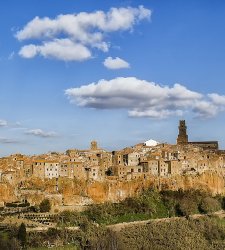
Pitigliano, the little Jerusalem "fantastic appearance in the tranquility of the landscape"
The community of Pitigliano remembers with sorrow the year 1938, that of the racial laws. A sorrow that, of course, is felt by all of Italy, but which is particularly acute here, since, since the sixteenth century, this village that stands on a t...Read more...
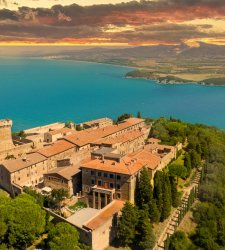
The two lives of Populonia, ancient land of iron
In the common imagination, Populonia is linked to two strong, defining elements: the Etruscans and the landscapes. And it is true: Populonia was one of the largest, richest and most powerful cities of the Dodecapolis, flourishing thanks to its mi...Read more...
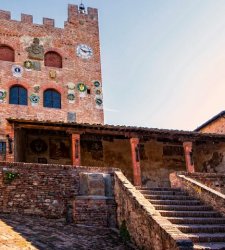
Certaldo, a piece of the Middle Ages in Boccaccio's hometown
Walking down the main street of the historic center of Certaldo, an abundant hundred meters paved in opus spicata and running between two wings of ancient buildings all in red brick, at a certain point, arrived about halfway, you will notice a house ...Read more...
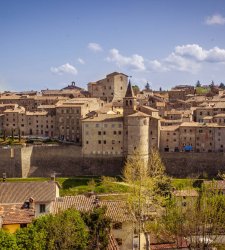
Anghiari, the village of battle amid Renaissance masterpieces and street dining
If you say "Anghiari," you invariably think of two things: the battle of 1440, and Leonardo da Vinci. And the two are connected, since the great Renaissance genius was supposed to have painted the Battle of Anghiari on the surface of one of t...Read more...
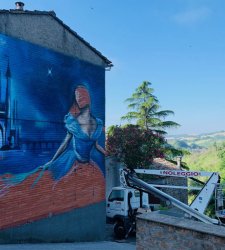
There is a fairy tale town in Tuscia all decorated with street art works
Street artist Stefania Marchetto, aka SteReal, has animated for the second year in a row with new fantasy characters the walls of Sant'Angelo di Roccalvecce, a small village in Tuscia, in the province of Viterbo, known as the village of fairy tales....Read more...
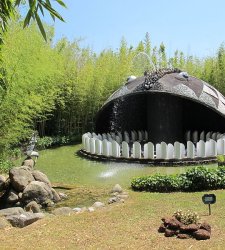
Art in parks: 10 outdoor contemporary art collections to see in Tuscany
Tuscany, we have pointed out several times in our magazine, is often crushed by its reputation as the "cradle of the Renaissance," so much so that for many this region is associated exclusively with ancient art. In reality, Tuscany is a thriving...Read more...
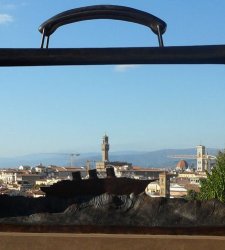
10 beautiful artist parks to visit in Tuscany
Not everyone knows that Tuscany, in addition to being the region where the Renaissance was born (which, as everyone knows, had its origins in Florence), and an area where one can see great artistic masterpieces from the Middle Ages to the 20th ce...Read more...
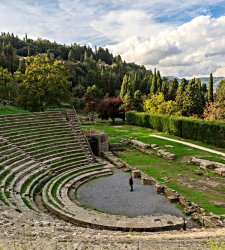
Ten archaeological sites to see in Tuscany, including Etruscans, Romans and the early Middle Ages
Tuscany is a land of a great ancient past: in the region there are Etruscan, Roman, and early medieval vestiges, not to mention the Ligurian Apuans of whom the conspicuous heritage of stele statues remains, now preserved in the archaeological muse...Read more...
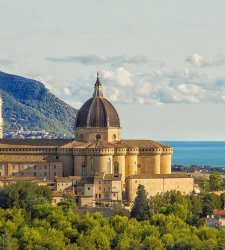
Ten villages to visit in the Marche region
Ten villages to visit in the Marche region1. Loreto It is one of the main pilgrimage destinations of the Catholic world, because here is the Basilica of the Holy House, or the imposing church built around what is believed to have been the house of...Read more...
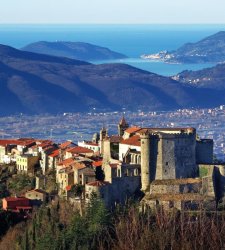
Ten villages to visit in Tuscany
1. Fosdinovo We know of the existence of the town of Fosdinovo since the 11th century, but the first attestation of the present toponym dates back to the 14th century (originally, the village was known as "Faucenova"). Fosdinovo was for many c...Read more...
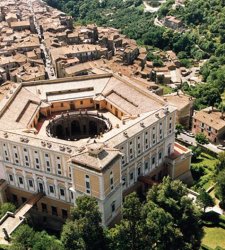
Ten villages to visit in Lazio
1. Caprarola The village of Caprarola, clinging to a tufa spur in the environs of Viterbo, was anciently a fief of the Farnese family, who have left a vivid testimony of their presence here, the spectacular Palazzo Farnese di Caprarola, a 16th-cen...Read more...
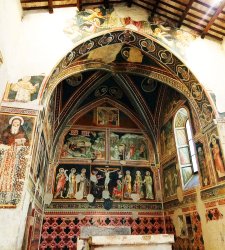
Ten villages to visit in Umbria
1. Città della Pieve Art enthusiasts remember Città della Pieve, a village in the province of Perugia, because it is the birthplace of one of the greatest artists of the Renaissance, Pietro Vannucci, known as Perugino, who was Raphael'...Read more...




























